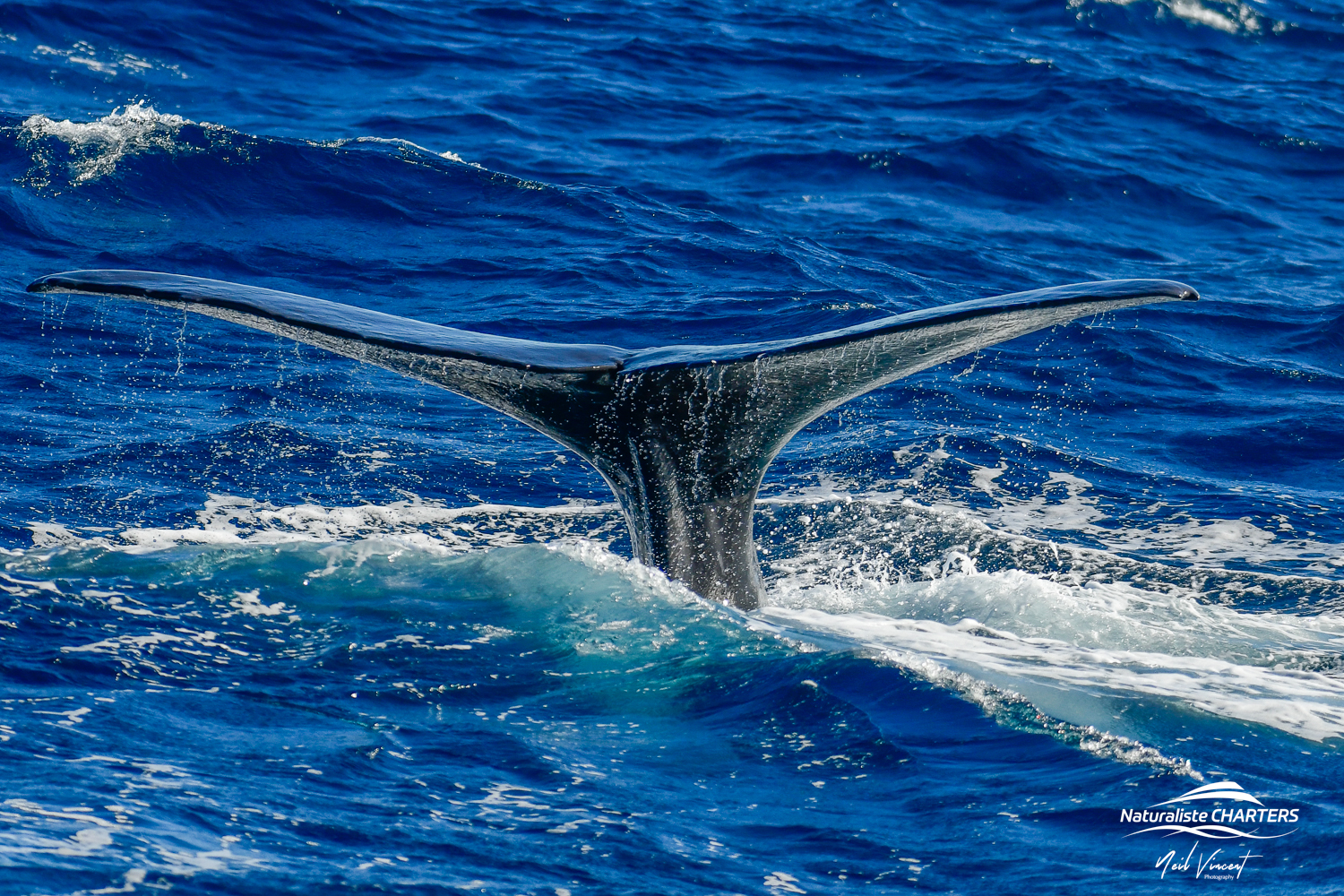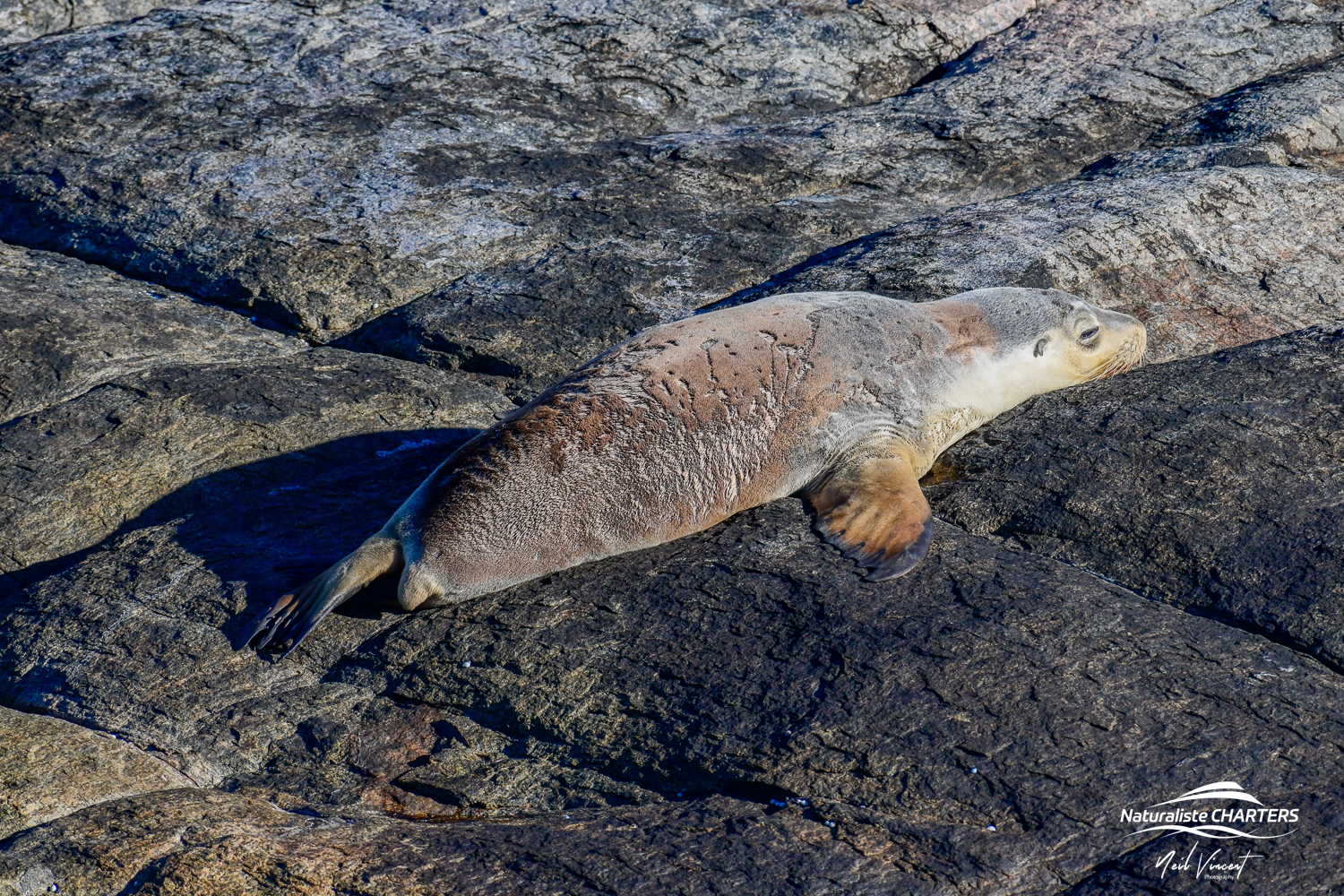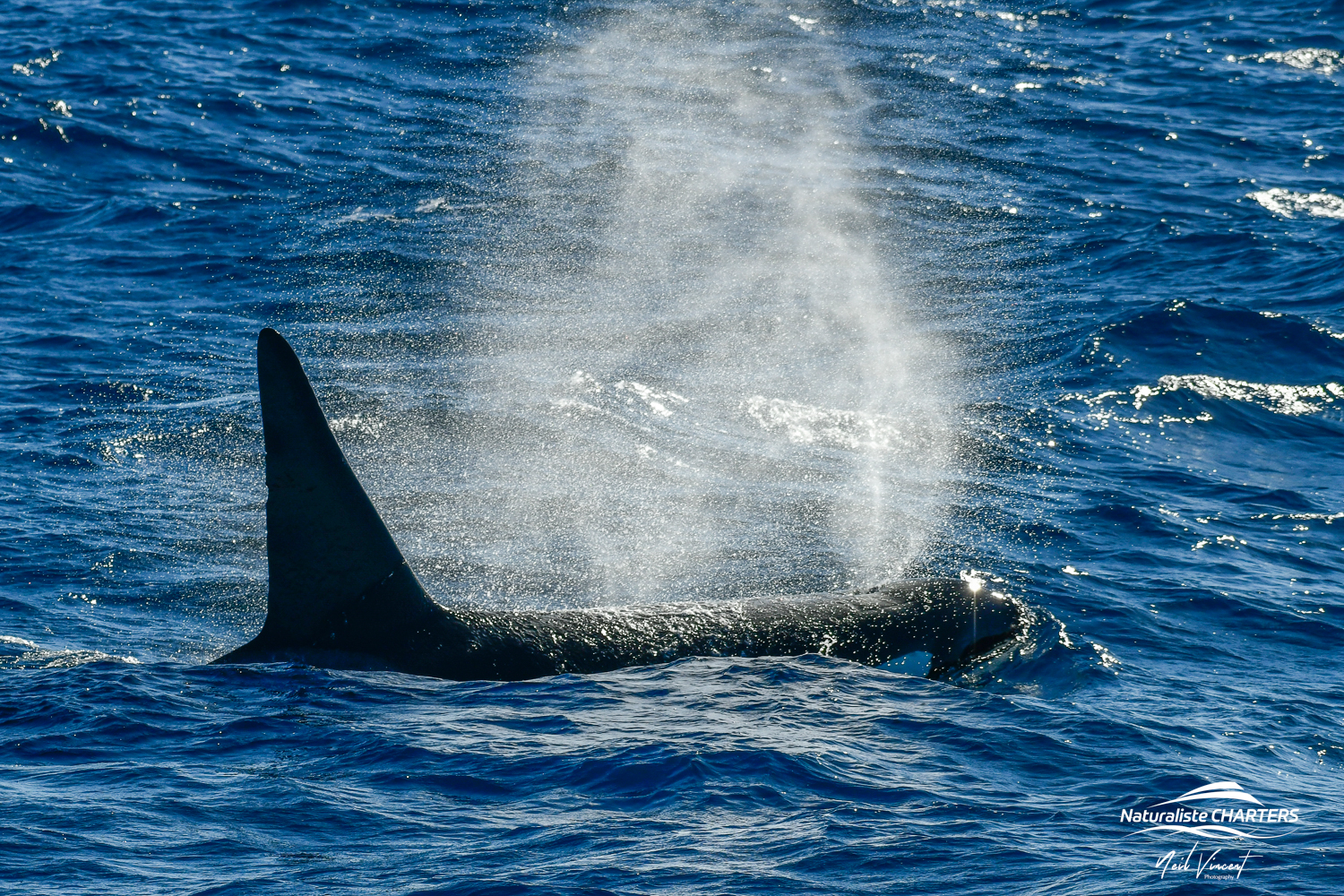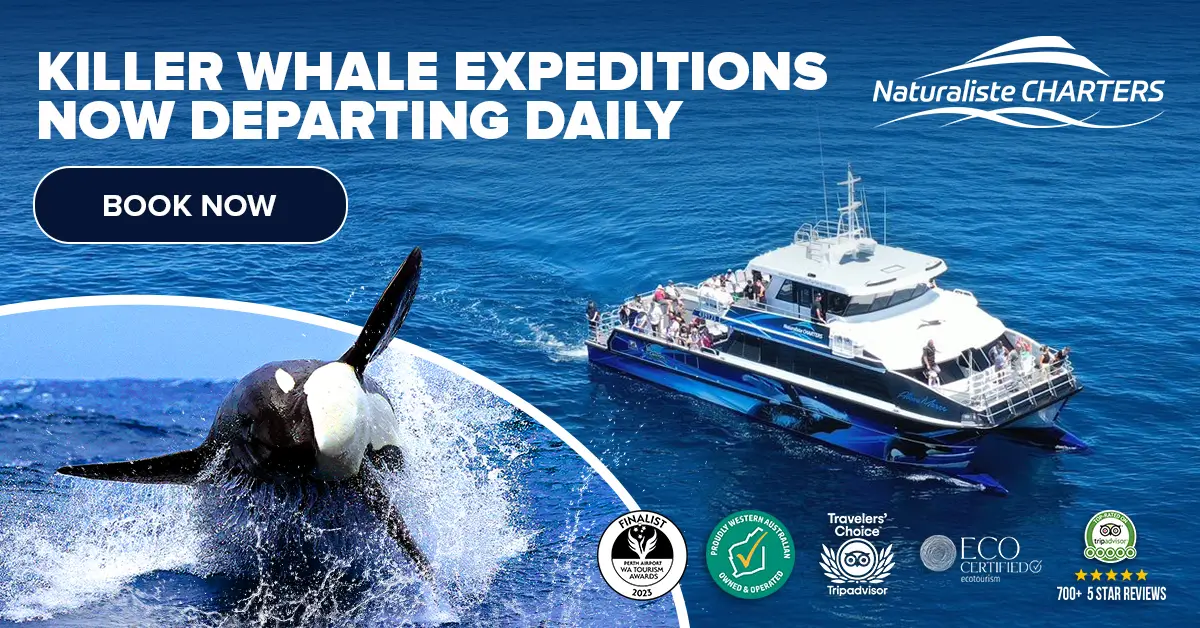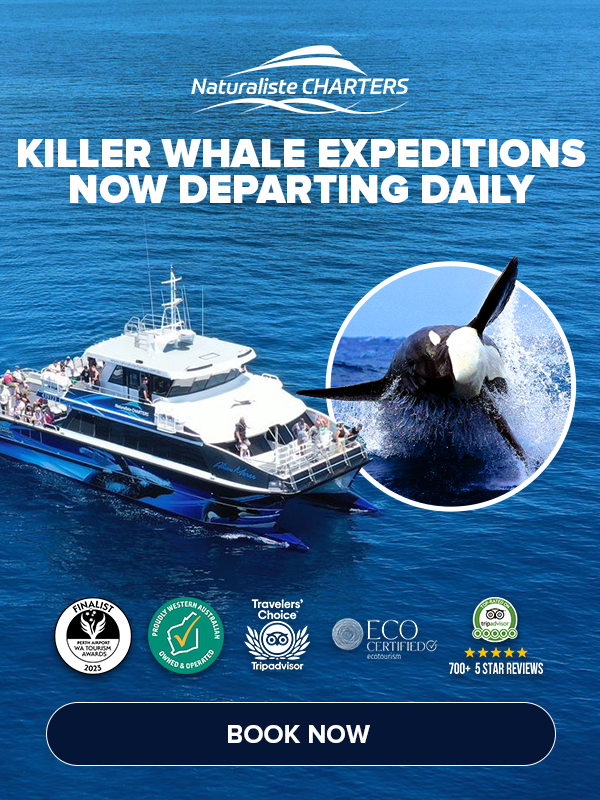Killer whales are the ocean’s top predator! Down here in WA we put that down to the animals having a complex matriarchal and matrilineal social structure…to put it more simply, everyone has to listen to mum AND more importantly granny!!
Naturaliste Charters are the pioneers of the killer whale expeditions in Western Australia with tours commencing in 2015. The deep abyssal sub-basin of Bremer Bay holds refuge to the largest congregation of orcas in the Southern Ocean! The research conducted on board and in collaboration with Project Orca has enabled us to identify over 150 killer whales which we now know by name! In ancient times orcas were referred to as asesina ballenas, or ‘whale killer’ – a term that was eventually flipped around to the easier ‘killer whale’. Their Latin and scientific name is orcinus orca– where orcinus translates to “kingdom of the dead” and orca being the type of whale.
Orca are highly complex and intelligent sentient beings with large brains and a heightened sense of emotion, even in comparison to humans. Killer whales are highly adaptable to their surroundings, often adopting distinct hunting techniques dependent on their available prey type. Orcas use of echolocation enables them to communicate and precisely coordinate their hunting tactics amongst each family pod. Their co-operation and ability to share definitely equates to their extreme success! We often witness the orcas hunting whilst on tour, seeing the predation techniques unfold right in front of our eye as they call in other family groups to assist in the kill. Once the hunt is complete the orcas calmly and politely share out the carcass amongst the involved pods before going back to their own regions of the canyon (If only humans could adopt such techniques!)
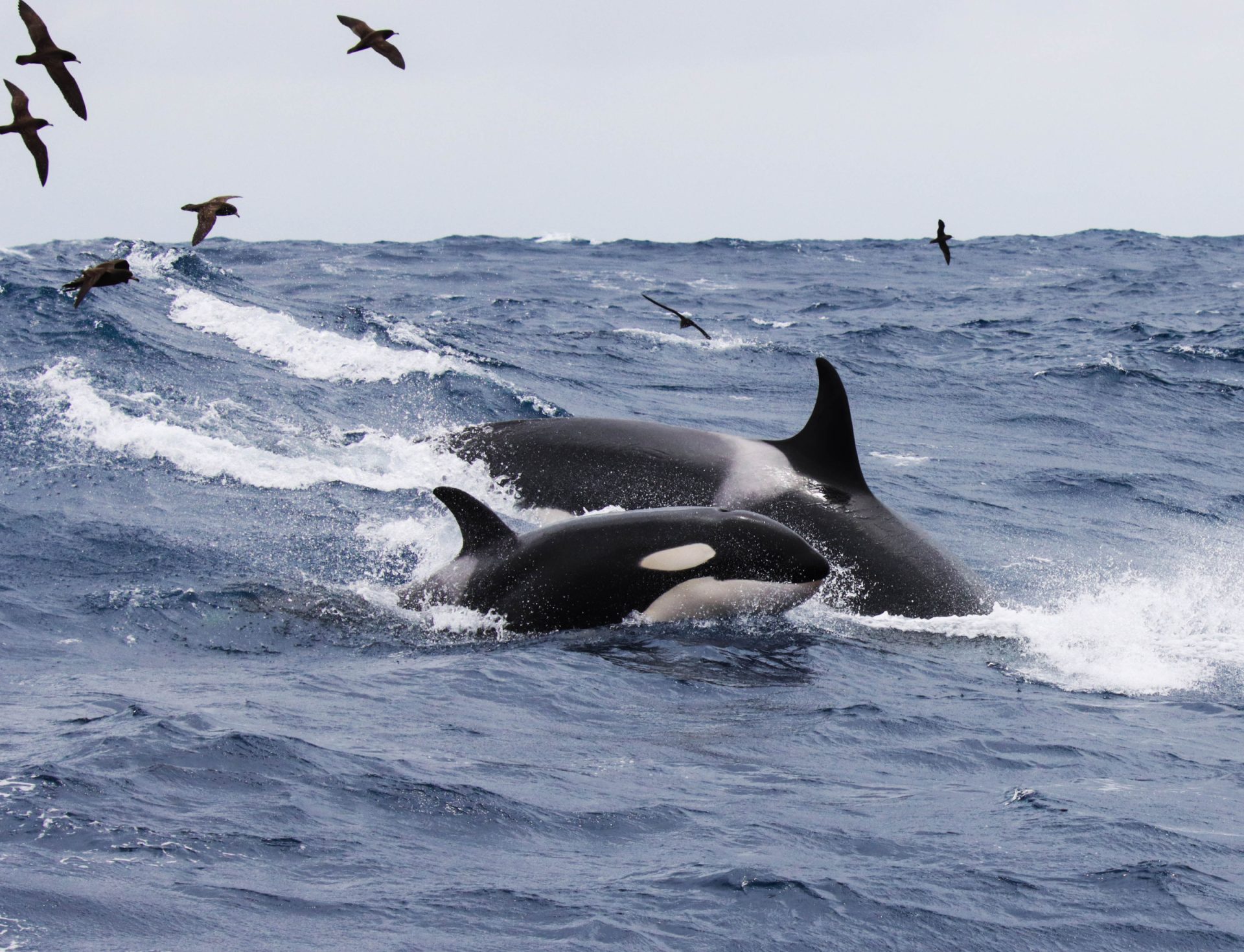
Killer whales being the largest of the Delphinid (toothed whale) group have been able to adapt to their conditions and climate whether it be tropical or temperate. Each eco-type learns specific hunting techniques that’re handed down, by generations of successful matriarchs, for each prey type. Most ecotypes of orcas’ have a specific diet from fish eaters, mammal eaters, squid and seal eaters to even moose! However, the Bremer orcas are more generalist, altering their hunting behaviours throughout the season depending on what the tides, currents and upwellings bring to the surface.
In the Bremer sub-basin the orca have the upper hand, as even after 7 years of research we still don’t have insight as to where the pods aggregate before January or where they head beyond April when we leave. There have been a few attempts at uncovering their whereabouts outside of our operating months, but you’ll have to join us on tour to gain full access to our pool of orca-some knowledge! In this instance it seems to be the mystery of the unknown that keeps the staff, volunteers and customers coming back for more – Its truly an orca-diction! Every day in the canyon is discrete and diverse in the action, animals and adventures than the one prior!
Here’s some fun facts and a few FAQ’s that’ll blow your mind!
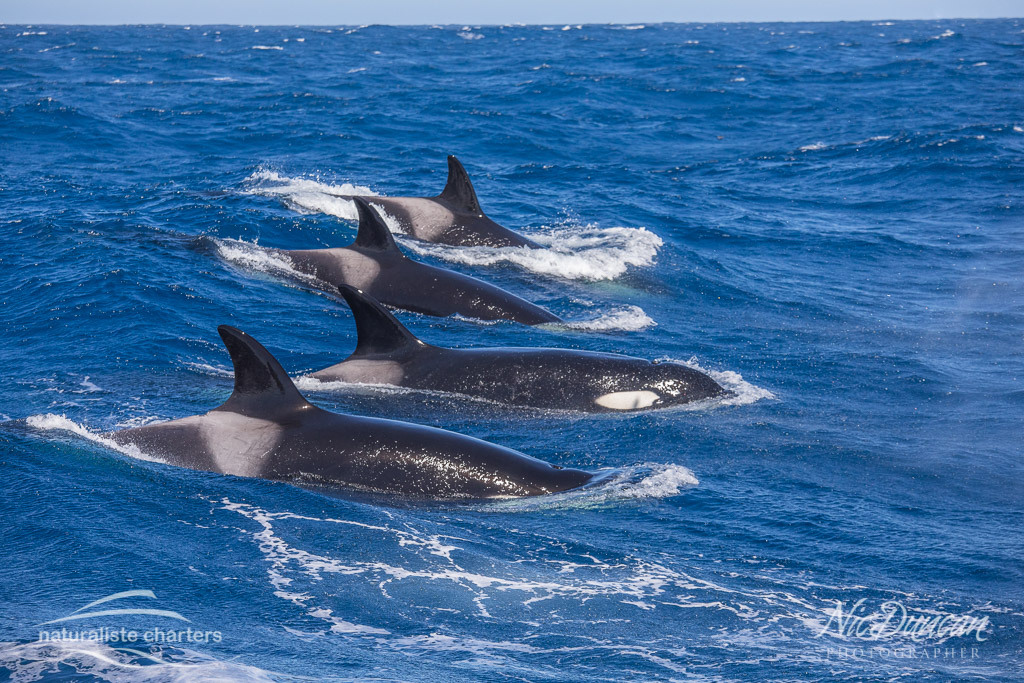
Do we see sharks? YES we see sharks, the most common shark sightings include species such as the whaler sharks (bronze and dusky), hammerheads AND oceanic blue sharks! All of which are generally scavengers which come within close proximity to the vessel. We see sharks every few days and most frequently after the orcas hunt and takedown an animal! This is so the sharks can feast on the entrails and remnants of the remaining carcass! I bet you’re thinking “what about great white sharks?”, well…we don’t often see white sharks associated with orca! Why, do you ask? In certain areas, such as South Africa and more closely South Australia, there has been evidence of killer whales successfully hunting and killing great whites! Their technique is brutal and more a sign of asserting dominance in the pecking order. It only takes two killer whales to spin a white shark upside down until it’s in a docile state, where they then tear the animal until it splits, only dissecting the liver from the remains before letting the often +4m sharks wash ashore. IMPRESSIVE! And seemingly not because they were hungry!
Has anyone ever swam with the orcas? You can swim with the Norway population of killer whales as they’re solely fish eaters! BUT a film crew has jumped into the 1000m deep Gatorade blue waters to the Bremer Canyon once! The filming was a success, only exiting the water due to the increasing shark activity beneath them. We can all only hope and dream to one day swim with these incredible animals and feel the insignificance of our presence amidst the ocean’s greatest predator!!!
How close do we get to the orcas? It’s more a question of how close do they get to us?! The orcas’ actively seek out the vessel and most often after they’ve successfully found their lunch! On almost every tour we encounter close interactions and passes from multiple pods of killer whales. Each family group consists of between 6-10 animals with the playful juveniles taking most interest in us! Some customers are lucky enough to get so close that the orcas exhale becomes a face mist!
When do they jump? Sometimes it’s sporadic BUT most of the time the orcas’ become social and energetic after a kill. The celebrations are often displayed through breaching, tail-slaps and all things acrobatic and surface bound! Never any complaints there! The males use this time of year to show off during courtship, often attracting a favourable females attention through their almighty breaches and the following splash that erupts as they land their 9 tonne body back into the deep blue!
How far out do we go? The canyon itself is 24 nautical mile (or 50km) from the anchorage in which we depart. The journey to the “hotspot” which is the 3nm area that we find the killer whales on most tours throughout the season often takes between 1-1.5 hours. We keep you updated on our position as we drop over the continental shelf of Australia which plummets from 80m to 1000m almost instantly! Throughout the day we cruise around in 1-2km of water with some of the canyon trenches reaching 4.5km deep!
What else can we see on tour? Throughout the season you’re likely to encounter a plethora of marine mammals and other oceanic creatures! We regularly sight sunfish, pilot whales, multiple species of dolphins, sharks, sea lions, sperm whales, other baleen whales and even the worlds’ largest animal the BLUE WHALE migrates through the region!
What seasickness remedies do you recommend? To ensure your day is a nausea free and action packed day we highly recommend taking either travacalm or kwells one the night before AND two on the morning of your tour! We hope to see you out in the canyon to tick off one of your bucket list items and your orca experience with us at Naturaliste Charters.


